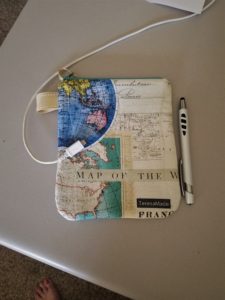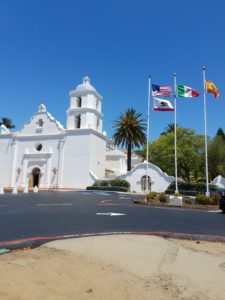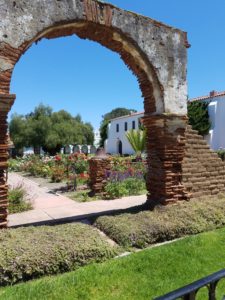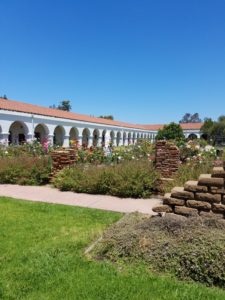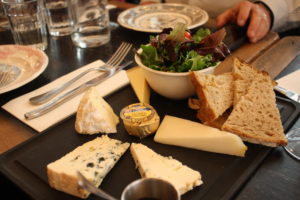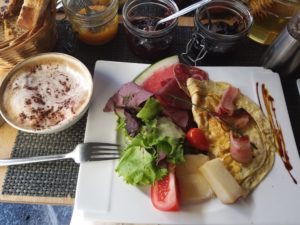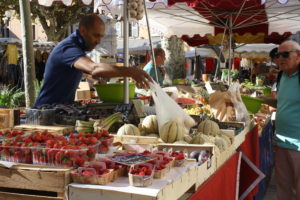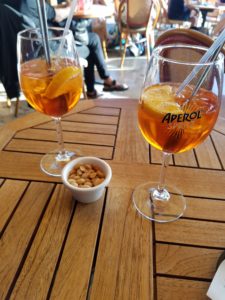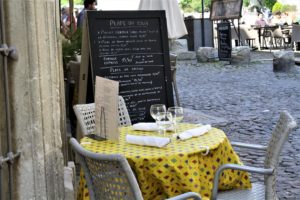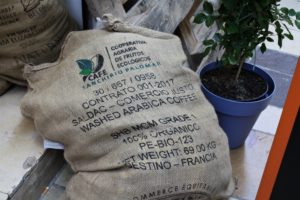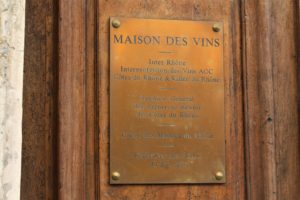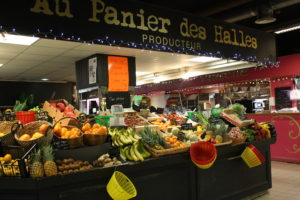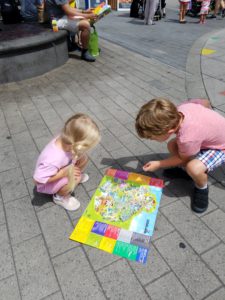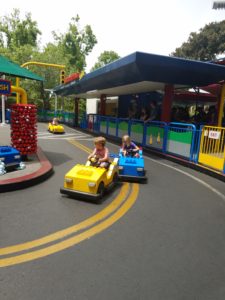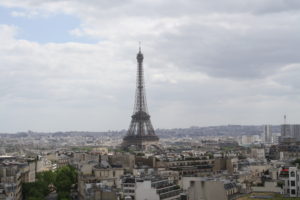The appeal of perfume is that it is at once ephemeral and empowering…~ Mary Gaitskill
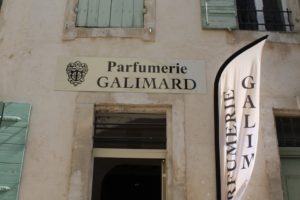
Traveling is experiencing. At least, it is for me.
So, when in Saint Remy de Provence I decided to make an appointment at a parfumerie. A new experience for me.
I thought maybe I would get an understanding of the process by watching a professional make perfume. But, it was much more than just sitting down while someone mixed up different scents. This was going to be a hands-on, nose-involved, one-on-one lesson in making my own perfume.
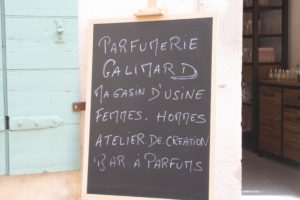
Jars, bottles, photos, coffee beans, and assorted mixing sticks were arranged on the bar in front of me. My own personal mini-lab.
Catherine, at Parfumerie Galimard, is schooled in the science of perfumery and has her credentials. She was my teacher for the afternoon.
Before we started, she explained what a base note is and how it differs from a heart note and from a head or top note. I also learned there’s a fragrant farm just 4 km from Grasse, in the south of France. Yes, a fragrant farm. For five consecutive generations one family has grown the May rose exclusively for the Channel No 5 scent. Yep. All 35 to 40 tons of May rose petals are processed for Channel.
Did you know that four tons of roses equals about 1,600,000 rose blossoms? And, that equals one kg of rose oil? No wonder some perfumes are expensive.
And, the town of Grasse. Jean de Galimard lived in Grasse in 1747, where he created Parfumerie Galimard. During this time, he supplied the court of Louis, King of France, with olive oil, and pomades and perfumes developed from his own formulas. These scents were used to enhance gloves of the fashionable crowd.
Today, those same processes and the natural resources of Grasse are still being used. Jasmine, rose, lavender, orange flower, and tuberose are some of the most widely used to obtain the rich scents necessary for quality perfumes.
“Okay, enough history.” Catherine told me. “You’re going to make your own scent. It will be based on your preferences. Are you ready to work?”
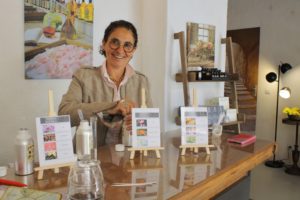
Are you kidding? Of course.
So, where did we start? Catherine told me to make a fine perfume, you need to start with the best raw materials. Just like they did in King Louis’ time. “You must know where these materials came from and how they are grown.”
Then, she said they need to be mixed correctly to achieve the scent you’re looking for.
To do this, parfumeurs use the olfactory pyramid. Ingredients in any perfume are organized on three levels, based on their evaporation rates.
First, are the top or head notes. These are light, fresh, and very volatile scents. They are the ones you first smell. But, they’re also the ones to evaporate first. They can be energetic and exciting, catching your attention and involving your senses. According to Catherine, you might even think this is the essences of this perfume. You probably get smells of lemon, orange, tangerine, bergamot. Others like ginger, eucalyptus, lavender, thyme, sage and rosemary come through as well.
The next level is the middle or heart notes. These should be perceived immediately right after the head notes. They’re stronger and more sensual, awakening deep sensations. At times, they can even mask strong base notes. Smells like peach, rose, thrush, freesia, tuberose, chamomile, jasmine, green land, or oceans come through.
Last are the base notes. They’re the last ones to be perceived. They appear slower but evaporate gradually, lasting longer. These are the ones which give your perfume its personality. You might find scents like incense, patchouli, cedarwood, sandalwood, iris, heliotrope, vanilla, caramel, cocoa, coffee, mush, leather, and birch. They stabilize other scents and are often used for the relaxing and calming effect.
“Getting the right mix of top, heart, and base notes is what makes a great parfume. Each person smells those notes differently. Getting it the way you like makes your great parfume.
“When we’re finished, I will show you how to wear your new scent.” And, she did.
Now, time to start. Catherine took me through the process of smelling and mixing. She handed me the jar of coffee beans. “Smelling coffee beans in between scents cleanses those scents from your nose. Much like the process when you sniff different wines.” More smelling and mixing followed. It was a fun-filled, educational hour and a half.
I lost track of the number of combinations of top, heart, and base notes I smelled. She took me through a series of scents, telling me not to comment whether I liked it or not. More coffee beans to sniff. Then, I went back and smelled them again. By then, I did have preferences.
When we were finished, I had my own unique formula. My recipe. I walked away with my own bottle and an appreciation of what goes into making perfume. It’s a lot more complicated than I imagined.
By the way, they keep that formula on hand in case I want to re-order. Smart.

If You Go:
http://www.galimard.com/index.php/en/la-source-parfumee.html
